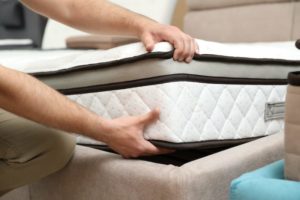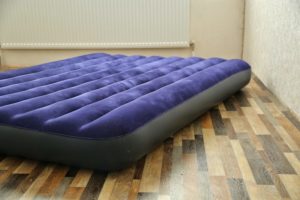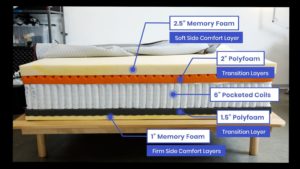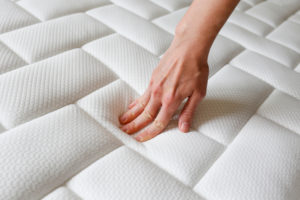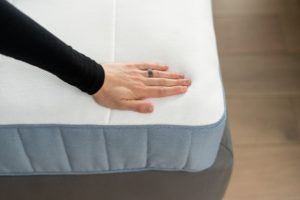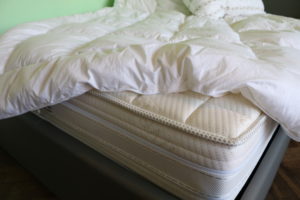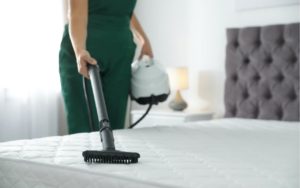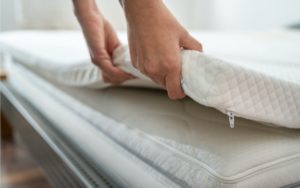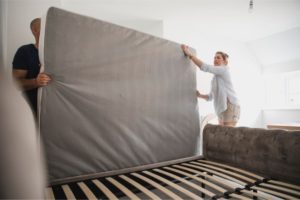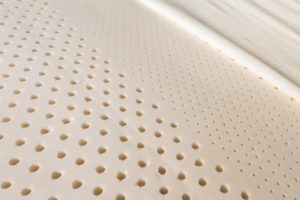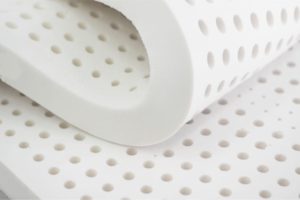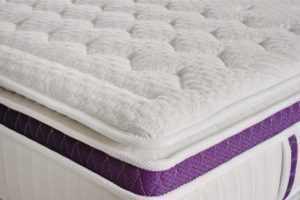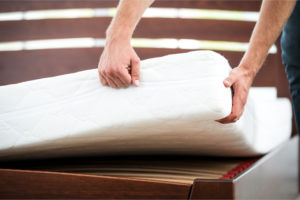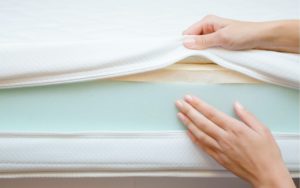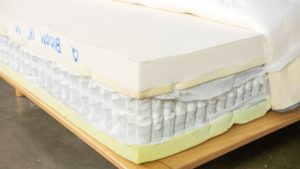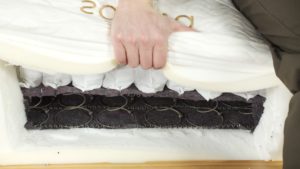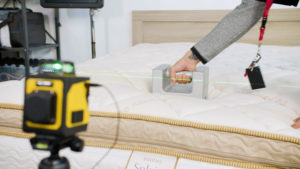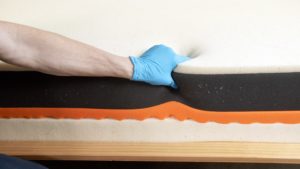Do You Need a Box Spring?
It Depends on Your Bed
When shopping for a new mattress, you might find yourself wondering if you need to buy a box spring, too. Years ago, box springs were much more commonly used than they are now. We’ll walk you through what a box spring is, the pros and cons of box springs, and alternative foundations you can use for your mattress.
Let us help you find the perfect bed
Answer a few questions to find the right mattress for your unique needs
What Is a Box Spring?
A box spring is a support layer built to sit between a mattress and a bed frame. Most box springs are built with a wooden or metal frame filled with sturdy metal springs and wrapped in a thin layer of fabric.
Box springs look very similar to mattresses at a glance, because they are generally the same size and shape as the mattress they sit below and are often covered in the same or similar fabric.
However, compared with a mattress, box springs are generally much stiffer and do not contain soft layers other than the fabric that covers them.
In addition to providing support, a box spring also absorbs some movement from the mattress that sits above it, helping soften the impact when you move and extending the lifespan of the mattress. A box spring can also help keep the mattress cooler by allowing air to flow through its springs. Most box springs are about the same thickness as a mattress, though much thinner “low-profile” box springs that are only a few inches tall are also available from some companies.
Do You Really Need a Box Spring?
Not all mattresses require a box spring. The type of mattress you use, along with your other bed-related preferences, will determine whether or not a box spring is best for you. Often, a mattress’ warranty requires that the mattress be used with a specific type of support.
Innerspring mattresses are often designed to be used with box springs. On the other hand, all-foam mattresses are not designed to be used with box springs. Foam beds require rigid support, and they can be damaged or wear out faster when placed on top of a box spring. The same is true for many latex and hybrid mattresses. If you’re unsure, you can check the bed’s warranty or contact the manufacturer to confirm.
How tall you would like your bed to be can also influence whether or not you use a box spring. Box springs can elevate your bed. Some people find elevated beds easier to get in and out of.
Pros & Cons of Box Springs
| Pros | Cons |
|---|---|
|
|
Alternatives to Box Springs
Nearly all mattresses work best when they have support beneath them instead of being placed directly on the floor. While box springs and metal bed frames are one form of support, many alternatives to box springs exist.
- Foundation: A bed foundation provides a rigid surface in the form of either solid wood or a series of separated wooden slats. It’s used instead of a box spring and may come as a high-profile upholstered piece or as a slimmer model designed to be paired with a bed frame.
- Platform bed: A platform bed consists of a thin slatted or solid base mounted on four or more legs. This all-in-one solution supports the mattress with no need for an additional bed frame or box spring. Some platform beds have built-in drawers beneath them for storage.
- Adjustable bed frame: An adjustable bed frame can be adjusted into different positions, often electrically, using a remote control. For example, a sleeper may be able to elevate their head or feet in this bed. Adjustable beds are incompatible with bed springs.
Frequently Asked Questions About Box Springs
It’s better not to use a box spring with a memory foam mattress, unless the manufacturer specifically recommends doing so. Memory foam mattresses usually require more rigid support, and a box spring has some bounce and give. Using the wrong foundation for your mattress may void the warranty.
Generally, platform beds do not require a box spring. However, there is a wide variety of types of bed bases, so be sure to check with the manufacturer to determine if a specific bed platform was designed to be used with or without a box spring.
Bed springs often need replacing every 10 years. If you are replacing a mattress sooner than that, you may also want to replace the box spring at the same time.

Still have questions? Ask our community!
Join our Sleep Care Community — a trusted hub of sleep health professionals, product specialists, and people just like you. Whether you need expert sleep advice for your insomnia or you’re searching for the perfect mattress, we’ve got you covered. Get personalized guidance from the experts who know sleep best.






